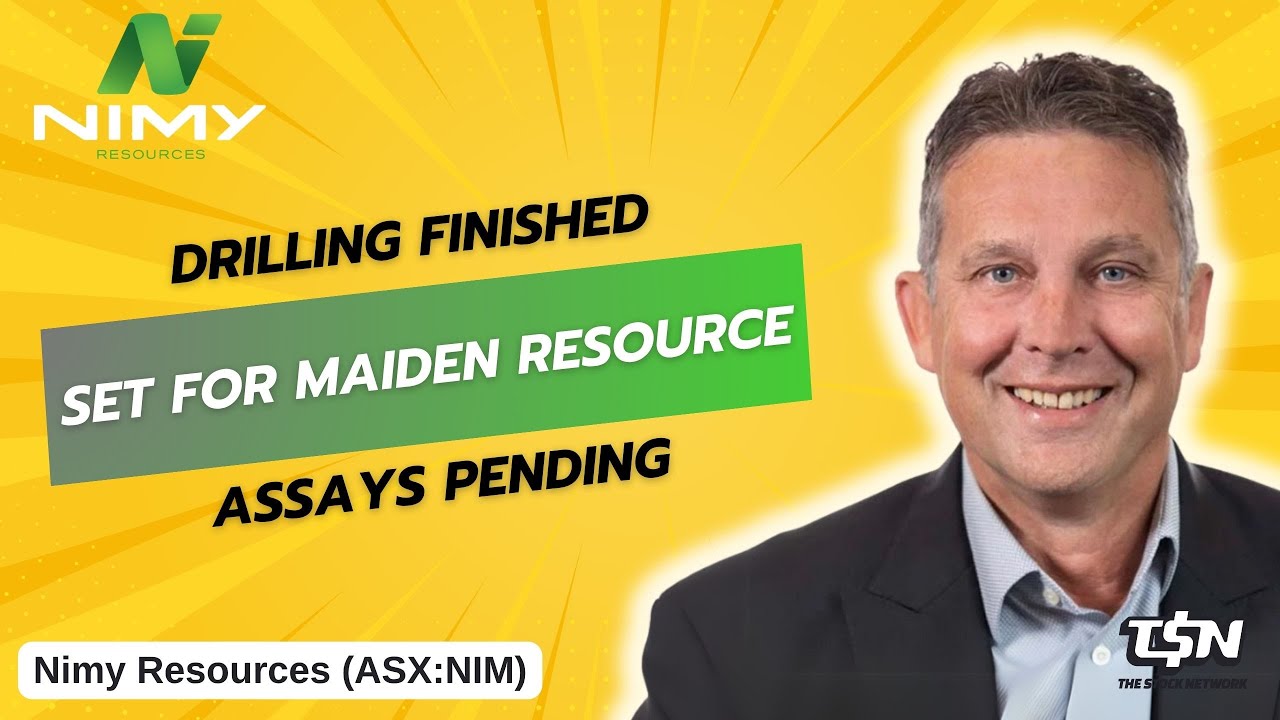
Transcription of The Stock Network Interview with Nimy Resources (ASX:NIM) Managing Director, Luke Hampson
Lel Smits: Nimy Resources has recently announced high-grade gallium in its first assays from its high-grade gallium discovery at its Block III prospect in Western Australia. Now the gallium drilling campaign has been completed, Nimy Resources Managing Director Luke Hampson joins me to discuss what lies ahead for Nimy Resources. Luke, welcome back to The Stock Network.
Luke Hampson: Thanks, Lel, good to be back.
Lel Smits: Now firstly, can you start by telling me about the high-grade gallium in your first assays? The announcement described the results as outstanding. What makes these numbers so unique and also what level of confidence do they give you about your drilling strategy as you target a substantial high-grade gallium jork resource?
Luke Hampson: Yeah, thanks, Lel. Yeah, the results were in line with our exploration target, our jork exploration target. So we’re really pleased with that. People recall we put a jork exploration target out really looking at the high-grade plus 100g per tonne. And we’ve got that in the, I think, three of the holes around the original drilling. So it sort of indicates the drilling strategy. That’s the first four of 25 holes.
So we’re very pleased with the high-grade intercepts that we’ve got in those holes. Excellent. Your last announcement said you’re set for your maiden resource with drilling campaign finished and further assays pending.
Lel Smits: Given the news flow you expect, can you talk us through your strategy and how this news flow supports your vision for the Block 3 prospect?
Luke Hampson: Yeah, we’re expecting our jork resource in the final quarter of this year. And the 25 holes that we’ve just drilled are all about being able to compile that. So in terms of the strategy, we’re looking for high-grade gallium. And as I said at the outset, we’ve got that in all the holes so far and we expect that to continue. In terms of our strategy, we’re really after high-grade gallium. The high-grade gallium, there’s not a lot of exploration going on at the moment that is targeting high-grade gallium.
We’re pioneers, if you like. Now our strategy is all around meeting the market. The market at the moment is driven by the need for semiconductors into high-performance computing, whether it’s AI and then into defence applications.
It’s a really interesting market and it’s becoming more and more apparent how critical gallium is across the world. We can recap the fact that China had 98% of the world market, if you like, and then they’ve imposed restrictions. So we’re finding that the feedback we’re getting out of Europe and out of the US is that there isn’t gallium available.
So our whole methodology around getting a dual resource and bringing this to market is because there’s a big opportunity there. The numbers that we’ve got around the size of that market is that the market should grow over the next, I think, 7-years by about 24.5% compound growth, which takes it from about $3.7 billion market at the moment out to around the $17 billion. So there’s a few different numbers that float around, but all of them really agree on that growth rate.
Something to note also recently is that Rio Tinto and Indium have a joint venture where they produce primary gallium and then the next step to that is around a pilot plant and then the pilot plant into full production. It is, I think, momentous, if you like, in terms of where the gallium market’s going that Rio Tinto are getting involved. So their full production is only expected really to meet 5-10% of that market.
So there’s a huge opportunity, and that’s from a Bauxite mine in Canada. So there’s a huge opportunity there for someone with high-grade gallium, remembering that the gallium produced from Bauxite is a by-product and I’m not 100% sure of what their grade’s going to be, but typically it’s around 20g per ton is what we’ve seen historically. There may be processing improvements that improve that a bit, but it still leaves a whole large market there for anyone who is at the front of the queue, if you like, and can produce high-grade gallium.
So that’s where we’re headed with that. It’s interesting because we’ve looked at numbers all the way through and they’re fairly opaque. It’s difficult in terms of what the gallium price is even.
As I said, the feedback that we’re getting is that there just isn’t gallium available, and that’s coming from end-users, not just from processors or gallium wafer producers or semiconductor producers. It’s people at the end of the line that are reaching out to find out where gallium supply is going to come from. So all of that put together gives us a fair bit of confidence going after a high-grade gallium deposit, getting it to JORC, working out what is the product we need to produce to get to market. It is all heading in the right direction as far as we’re concerned.
Lel Smits: That’s great to hear, Luke. I appreciate the update on the opportunity. Also, good to know that there is news flow coming and look forward to catching up with you about that in the future.
Luke Hampson: Thanks, Lel.
Ends